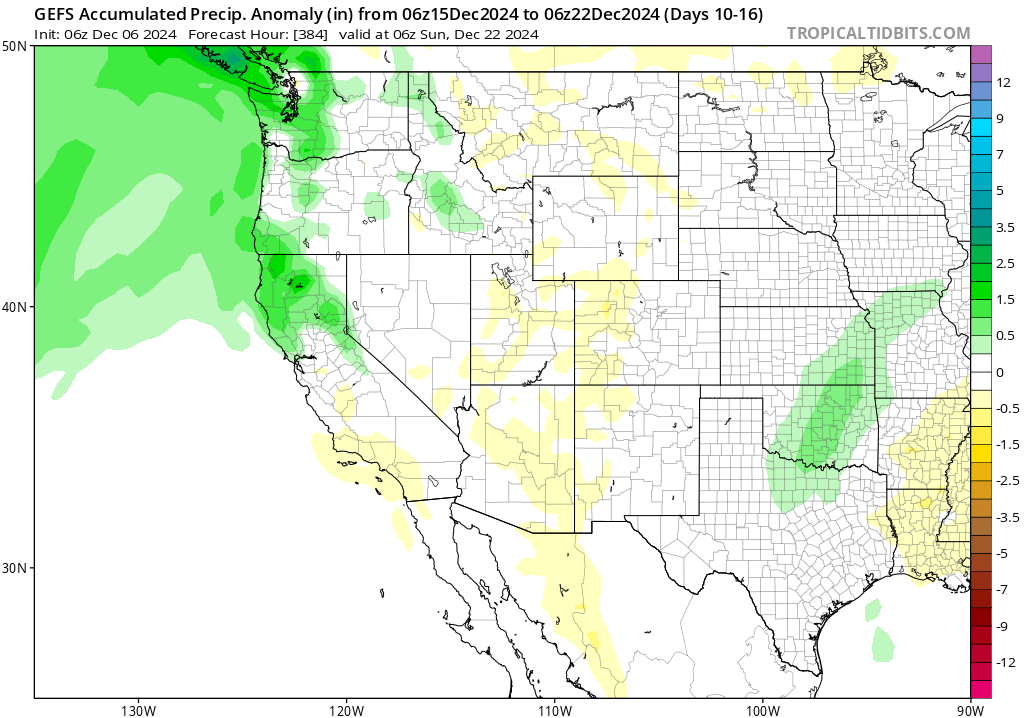Another swing of the precipitation pendulum in NorCal; Meanwhile, Santa Ana winds & wildfire risk in SoCal
A transition season of precipitation extremes…in NorCal (but dry in the south)
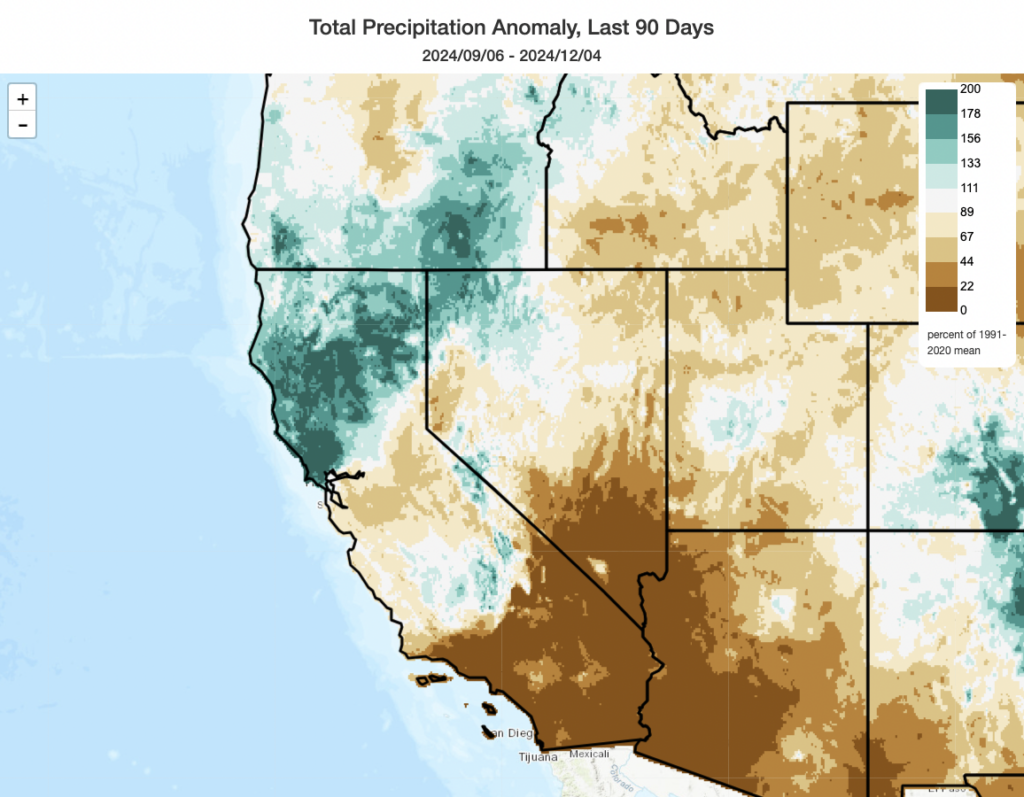
Well, this sure has been an interesting start to the Water Year in California. Over the last 90 days, in different parts of the state, there have been record hot temperatures, record-breaking heavy precipitation, and near-record low precipitation (and in some cases, more than one of the above have happened in the same locations!). After a slow start in Sep-Oct, Nov brought a strong and very slow-moving atmospheric river with a robust subtropical moisture tap (the subject of the last blog post)–which brought the heaviest 48 hour precipitation accumulations ever observed to a broad swath of northwestern California. Of particular note were the 24-72 hour totals in northern Sonoma County–including the City of Santa Rosa–where virtually all precipitation records from 24-72 hour durations were broken (in some cases, for the 2nd 3rd time this decade) as the atmospheric river sat over the region for nearly three days. Widespread flooding was reported, though fortunately the flood severity was not nearly what it could have been given dry antecedent conditions (i.e., the rivers had a lot of room to rise, reservoirs were nowhere near full, and relatively dry soils had water-absorbing capacity for the first portion of the event).
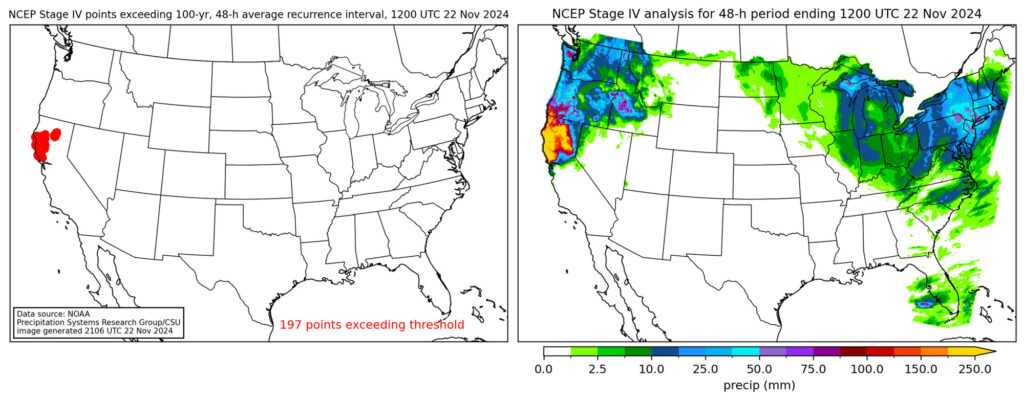
Although central California did see some rain from this event, most of SoCal remains nearly or totally dry–in keeping with a theme so far this season of all storms essentially staying north of Point Conception. Nearly all of SoCal has seen very little (or even no) precipitation over the past 90 days–in great contrast to northern California following the major Nov AR. The result is a pretty amazingly sharp precipitation dipole–even by California standards–that straddles almost perfectly the Interstate 80 corridor. (I sometimes use I-80 as a convenient but approximate geographic axis in my discussions, but as the image above illustrates it is quite literally the case in this instance!)
Temperatures over the last 90 days have varied, and though they have generally been warmer than average across CA (with episodes of record-breaking heat), there have also been much cooler periods (so the reds on the map below are not nearly as “dramatic” as some previous record-warm months this year).
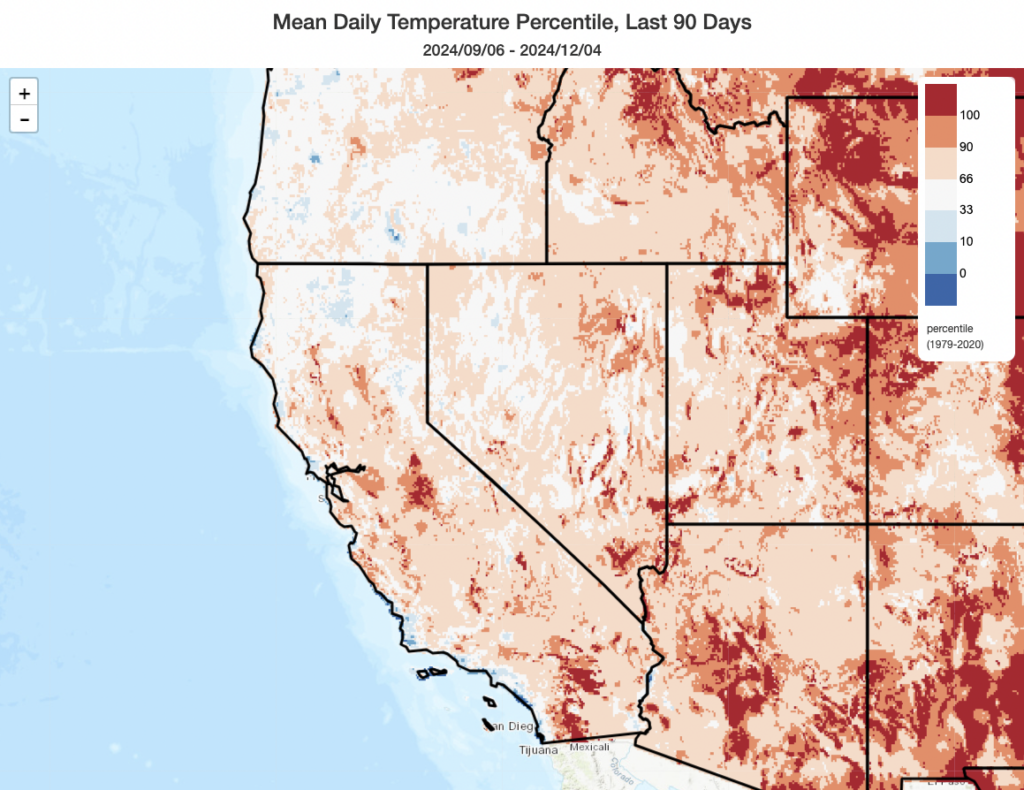
Another dry 7-10 days statewide, with Santa Ana winds/elevated wildfire risk in SoCal at times
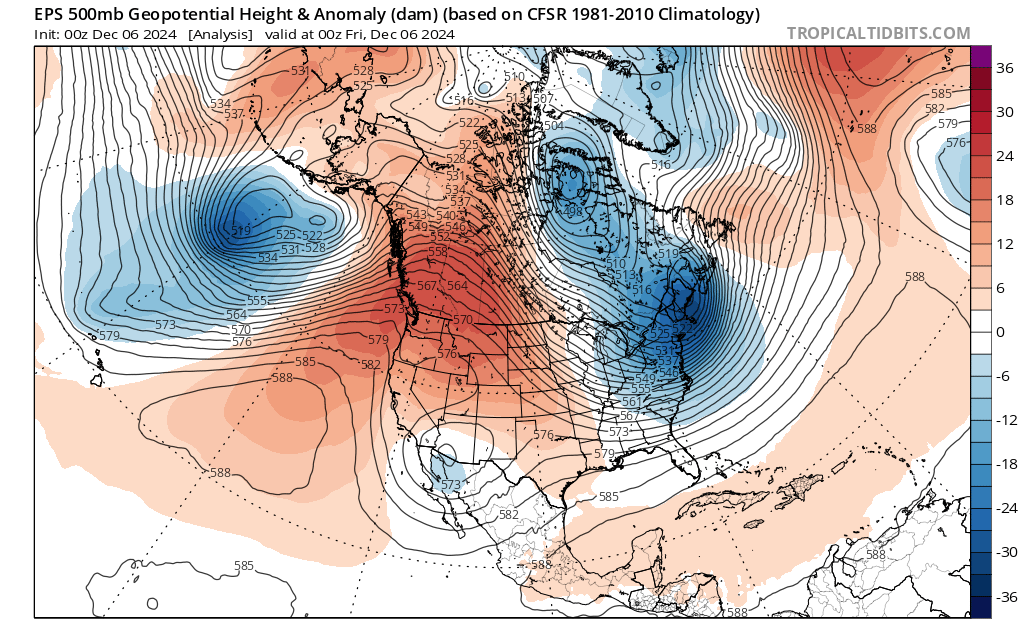
For the past 2 weeks, a strong and persistent ridge has developed and anchored itself along or near the West Coast (much as advertised by long-range models when the major atmospheric river was occurring back in Nov). This has yielded quite dry and often unusually warm conditions across most of California during this period (with the exception of portions of the Central Valley and interior mountain valleys, where cold air has lingered under temperature inversions and local tule fog has kept things on the cool and clammy side).
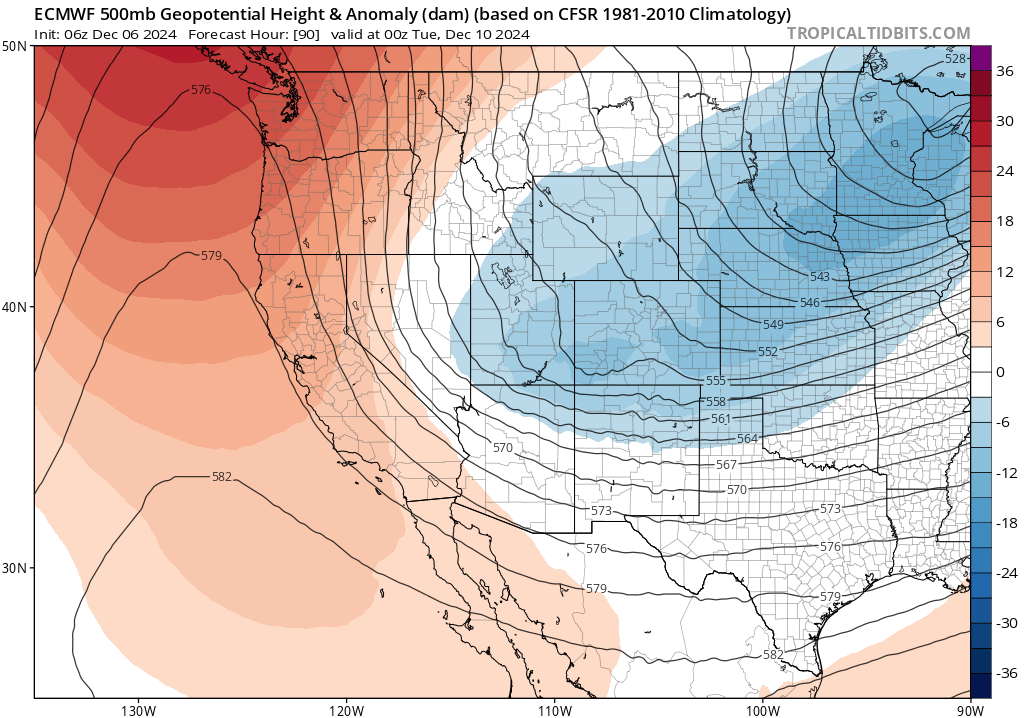
This general pattern looks set to continue for at least another week, and perhaps a bit longer, before a bit of a pattern change may begin to emerge around mid-month (see next section). But there will be one difference of note: later this weekend into early next week, a fairly robust “inside slider”-type low pressure system will dive southward east of the big ridge into the Great Basin–generating a classic December Santa Ana (offshore) wind event in SoCal during this period. Right now, this looks like it could be a fairly significant event on Mon-Tue, with widespread strong and gusty E/NE winds and low humidity. This looks to be a relatively warm Santa Ana event (or at least not a cold one), and coastal areas in SoCal will likely warm to well above average/balmily warm temperatures for as long as the downslope/compressional influence of the winds persists. Given the continued lack of fire season-ending precipitation in SoCal thus far this season, this Santa Ana event will certainly elevate fire weather conditions during this period and perhaps to critical levels in some locations early next week. So fire season is definitely not over yet in the southern ~1/3 of California, even though it pretty clearly is throughout the rest of the state.
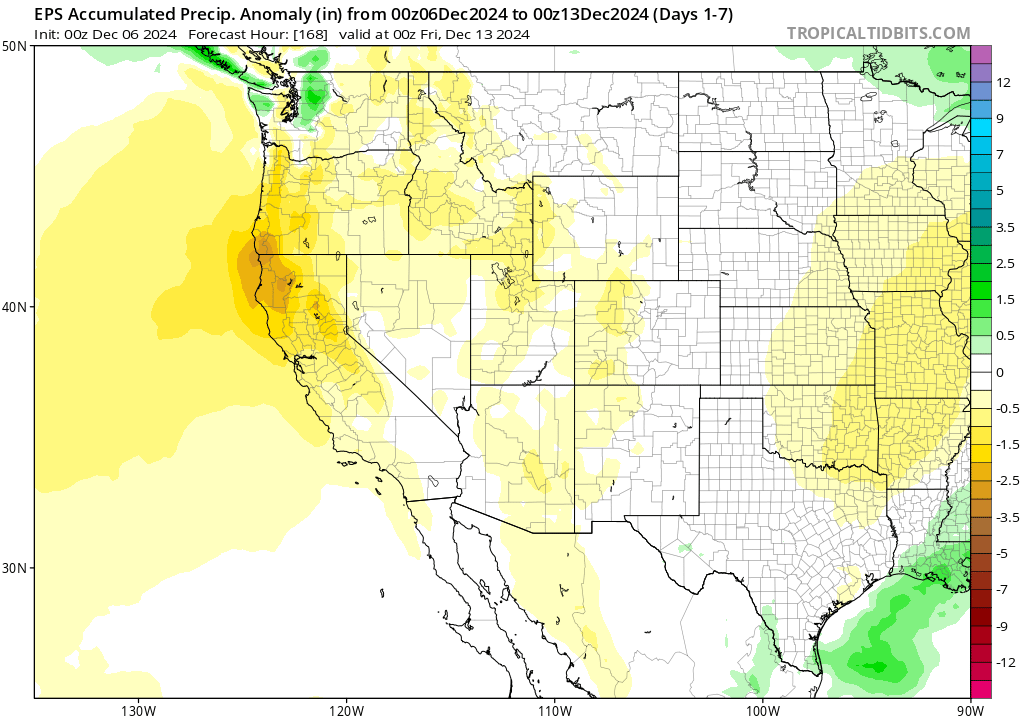
Mixed signals re: pattern change around mid-Dec; possible wetter shift, but uncertain
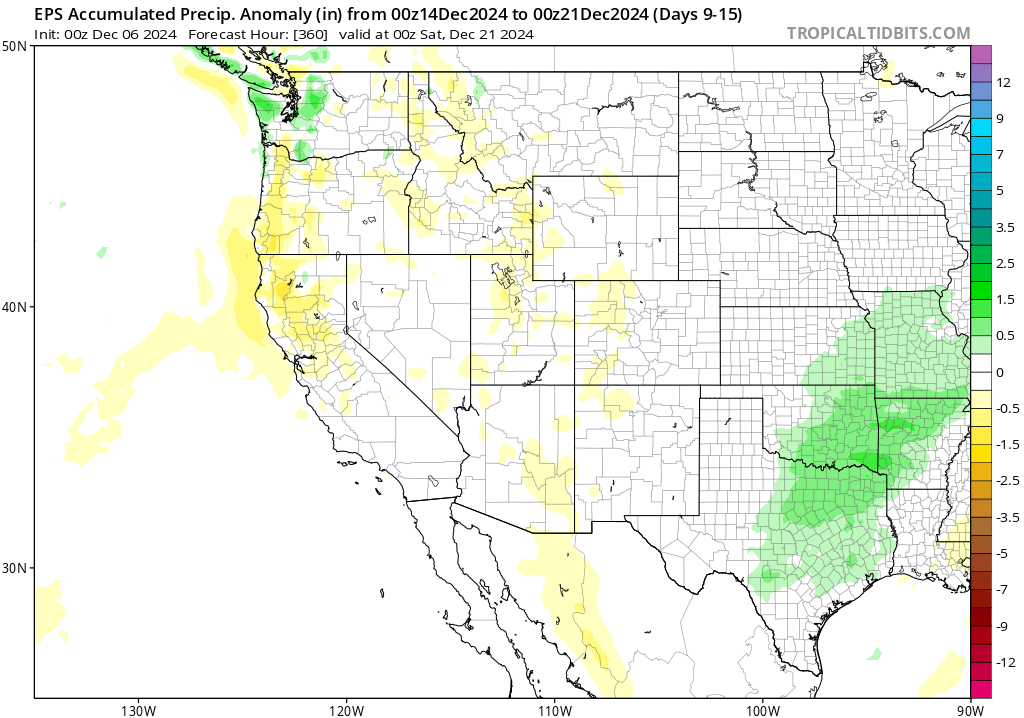
By mid-December, there has been considerable inter-model disagreement regarding the possibility of a pattern change that could bring wetter/cooler conditions to the West Coast, including California. This uncertainty persists to present, with the GFS ensemble trending a bit wetter and the ECMWF ensemble a bit drier. What does appear likely is that the strength and persistence of the West Coast ridge will fade during this period, allowing at least some Pacific storm activity to reach the West Coast. Whether this brings widespread rain/snow to California remains to be seen, though it is possible. The odds of a wetter pattern shift are greatest in the northern half of California, and lowest (unfortunately) in southern California–though there is still a ~25% chance or so that wetter conditions could also return down south in this period. The good news is that there’s still plenty of time left in the California wet season, and we’re also coming out of 2 consecutive years that were considerably wetter than average across most of the state. I’ll offer some further thoughts on the rest of the season in my next blog post. Stay tuned!
